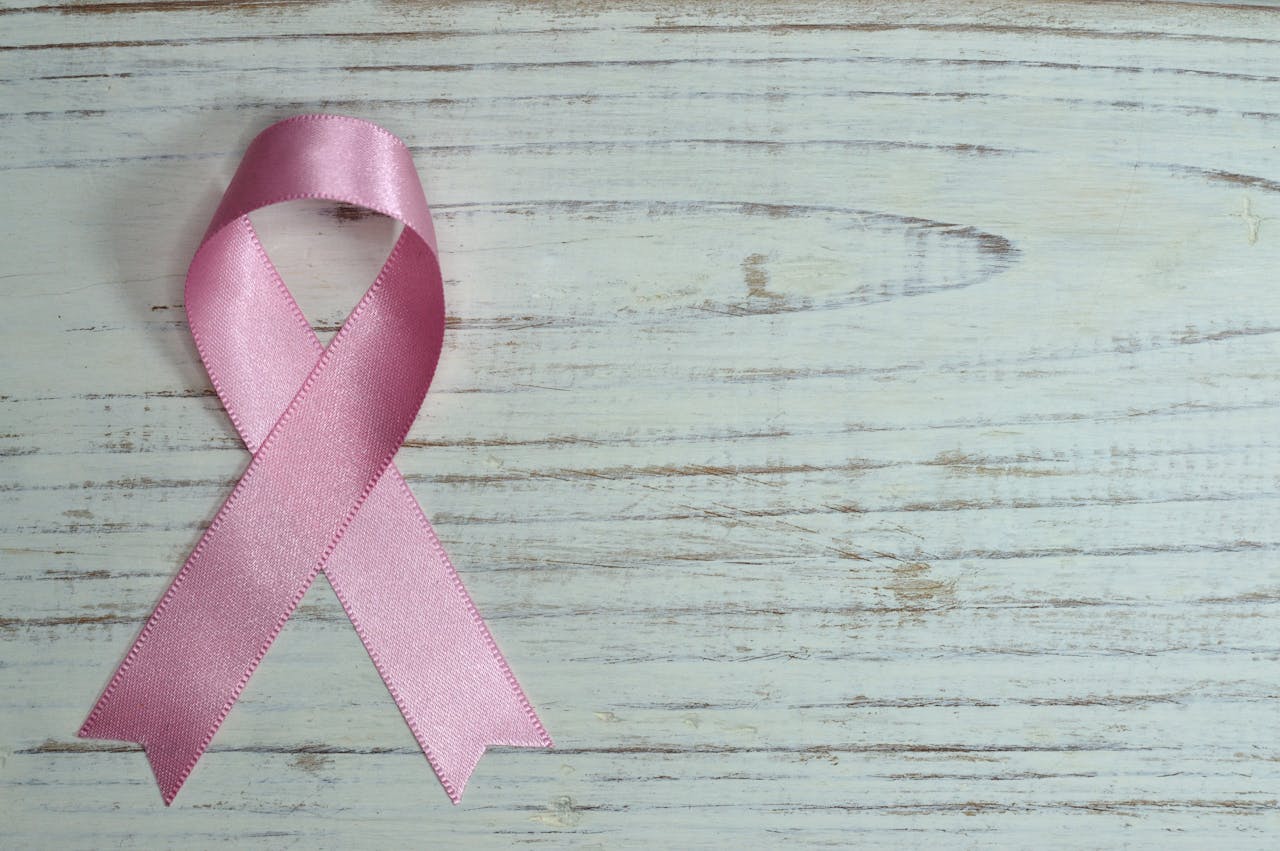Histopathological Grading based on Tumor Margin according to BI-RADS Mammography in Breast Cancer

Downloads
Highlights:
- The highest distribution of breast cancer patients’ age based on the 5-year age interval was 45- 49 years old.
- There was no significant difference between tumor margin and age of breast cancer patients.
- There was no significant difference between tumor margin and histopathological grade.
Abstract
Introduction: Mammography is an X-ray technique used to take images of the breast. It is the primary diagnostic method for breast tumors. Breast imaging reporting and data system (BI-RADS) classification is needed to determine benign or malignant masses by accessing the mass's shape, margin, density, and other features. However, the tumor margin is the most helpful one. This study aimed to know the difference in the distribution of tumor margin types in each histopathological grading in breast cancer patients.
Methods: This was an observational analytic study with a comparative approach using secondary data from medical records of patients with breast cancer at the radio diagnostic and anatomical pathology installation of Dr. Soetomo General Academic Hospital, Surabaya, from January 2017 to December 2021. All statistical data were performed using the International Business Machines Corporation (IBM) Statistical Package for Social Sciences (SPSS) version 27, with a p<0.05 considered statistically significant.
Results: Out of 235 cases, the highest distribution of breast cancer patients’ age interval was 45-49 years old (20.9%), the primary tumor margin type was spiculated (64.3%), and the highest distribution of histopathological grading was grade 3 (53.2%). There was no significant difference between tumor margin and age of breast cancer patients (p=0.815), with spiculated tumor margin as the most common type in all age intervals. There was no significant difference (p=0.163) in the distribution of tumor margin types in each histopathological grading, with spiculated tumor margin as the most common type in every grade.
Conclusion: There was no significant difference between tumor margin and age of breast cancer patients, and there was no significant difference between tumor margin and histopathological grading.
Trisna W, Sahudi S, Kusumastuti E. Correlation between Hormonal Status of Estrogen Receptor and Malignancy Degree of Invasive Ductal Breast Cancer. Maj Biomorfologi 2021; 31: 1. [Journal]
Lei S, Zheng R, Zhang S, et al. Global Patterns of Breast Cancer Incidence and Mortality: A Population-Based Cancer Registry Data Analysis from 2000 to 2020. Cancer Commun (London, England) 2021; 41: 1183–1194. [PubMed]
World Health Organization (WHO). Breast Cancer. Geneva, (2024). [Website]
Arnold M, Morgan E, Rumgay H, et al. Current and Future Burden of Breast Cancer: Global statistics for 2020 and 2040. The Breast 2022; 66: 15–23. [PubMed]
Ng B, Puspitaningtyas H, Wiranata JA, et al. Breast Cancer Incidence in Yogyakarta, Indonesia from 2008–2019: A Cross-Sectional Study Using Trend Analysis and Geographical Information System. PLoS One 2023; 18: e0288073. [PubMed]
Sung H, Ferlay J, Siegel RL, et al. Global Cancer Statistics 2020: GLOBOCAN Estimates of Incidence and Mortality Worldwide for 36 Cancers in 185 Countries. CA Cancer J Clin 2021; 71: 209–249. [PubMed]
Nicosia L, Gnocchi G, Gorini I, et al. History of Mammography: Analysis of Breast Imaging Diagnostic Achievements over the Last Century. Healthc (Basel, Switzerland); 11. May 2023. [PubMed]
Armando B, Setiawati R, Edward M, et al. Conventional Radiological Profile of Metastatic Bone Disease Based on Its Histopathological Results: A 3-Year Experience. JUXTA J Ilm Mhs Kedokt Univ Airlangga 2023; 14: 76–82. [Journal]
Daly C, Puckett Y. New Breast Mass. Treasure Island (FL), 2024. [PubMed]
Magny SJ, Shikhman R, Keppke AL. Breast Imaging Reporting and Data System. Treasure Island (FL), 2024. [PubMed]
Johns Hopkins University. Staging & Grade. Johns Hopkins Medicine - Pathology, (2018, accessed 4 July 2022). [Website]
Rulaningtyas R, Hyperastuty AS, Rahaju AS. Histopathology Grading Identification of Breast Cancer Based on Texture Classification Using GLCM and Neural Network Method. J Phys Conf Ser 2018; 1120: 12050. [Journal]
Syarti A, Pasaribu U, Fauziah D, et al. Characteristics and Histopathological Grading of Malignant Spiculated Mass in Regards to Histopathological Grading of Breast Cancer Based on the Nottingham Grading System. Biomol Heal Sci J 2020; 3: 33. [Journal]
Karim MO, Khan KA, Khan AJ, et al. Triple Assessment of Breast Lump: Should We Perform Core Biopsy for Every Patient? Cureus 2020; 12: e7479. [PubMed]
Nie NH, Bent DH, Hull CH. Statistical Package for the Social Sciences (SPSS), (2019). [Website]
Mursyidah NI, Ashariati A, Kusumastuti EH. Comparison of Breast Cancer 3-Years Survival Rate Based on the Pathological Stages. JUXTA J Ilm Mhs Kedokt Univ Airlangga 2019; 10: 38–43. [Journal]
Özmen V, Özmen T, Doğru V. Breast Cancer in Turkey; An Analysis of 20.000 Patients with Breast Cancer. Eur J Breast Heal 2019; 15: 141–146. [PubMed]
Tan KF, Adam F, Hussin H, et al. A Comparison of Breast Cancer Survival across Different Age Groups: A Multicentric Database Study in Penang, Malaysia. Epidemiol Health 2021; 43: e2021038. [PubMed]
Marino MA, Riedl CC, Bernathova M, et al. Imaging Phenotypes in Women at High Risk for Breast Cancer on Mammography, Ultrasound, and Magnetic Resonance Imaging Using the Fifth Edition of the Breast Imaging Reporting and Data System. Eur J Radiol 2018; 106: 150–159. [PubMed]
Barazi H, Gunduru M. Mammography BI RADS Grading. Treasure Island (FL), 2024. [PubMed]
Mohapatra SK, Das PK, Nayak RB, et al. Diagnostic Accuracy of Mammography in Characterizing Breast Masses Using the 5th Edition of BI-RADS: A Retrospective Study. Cancer Res Stat Treat; 5, (2022). [Journal]
Oluogun WA, Adedokun KA, Oyenike MA, et al. Histological Classification, Grading, Staging, and Prognostic Indexing of Female Breast Cancer in an African Population: A 10-Year Retrospective Study. Int J Health Sci (Qassim) 2019; 13: 3–9. [PubMed]
Albalawi IA, Mir R, Abu Duhier FM. Genetic Effects of Vascular Endothelial Growth Factor A (VEGF-A) and Its Association with Disease Progression in Breast Cancer Population of Saudi Arabia. Asian Pac J Cancer Prev 2020; 21: 139–145. [PubMed]
Noonpradej S, Wangkulangkul P, Woodtichartpreecha P, et al. Prediction for Breast Cancer in BI-RADS Category 4 Lesion Categorized by Age and Breast Composition of Women in Songklanagarind Hospital. Asian Pac J Cancer Prev 2021; 22: 531–536. [PubMed]
Tamaki K, Ishida T, Miyashita M, et al. Correlation between Mammographic Findings and Corresponding Histopathology: Potential Predictors for Biological Characteristics of Breast Diseases. Cancer Sci 2011; 102: 2179–2185. [PubMed]
Berment H, Becette V, Mohallem M, et al. Masses in Mammography: What are the Underlying Anatomopathological Lesions? Diagn Interv Imaging 2014; 95: 124–133. [PubMed]
Copyright (c) 2024 Shabrinna Ayasha, Lies Mardiyana, Budi Utomo, Iskandar Ali

This work is licensed under a Creative Commons Attribution-ShareAlike 4.0 International License.
1. The journal allows the author to hold the copyright of the article without restrictions.
2. The journal allows the author(s) to retain publishing rights without restrictions
3. The formal legal aspect of journal publication accessibility refers to Creative Commons Atribution-Share Alike 4.0 (CC BY-SA).




























